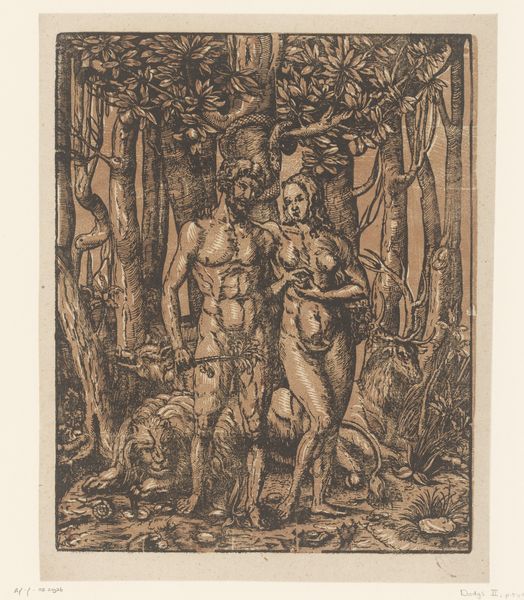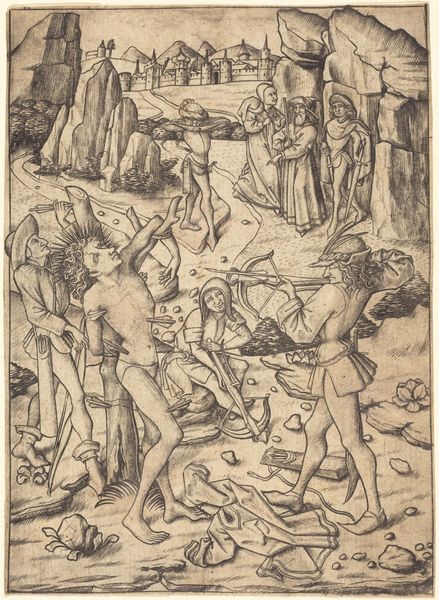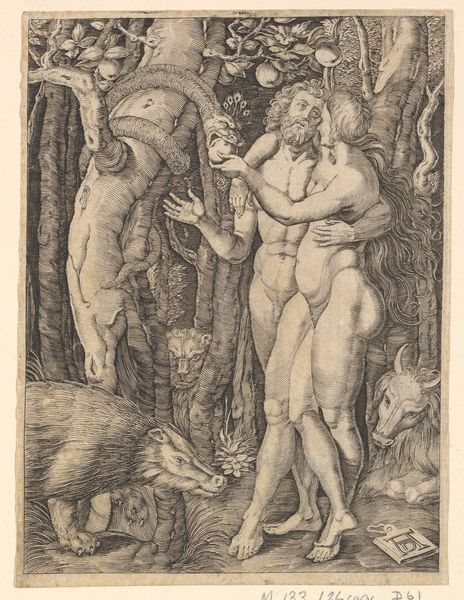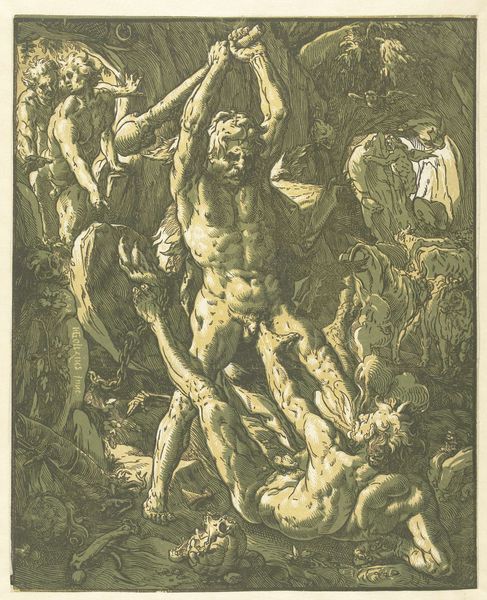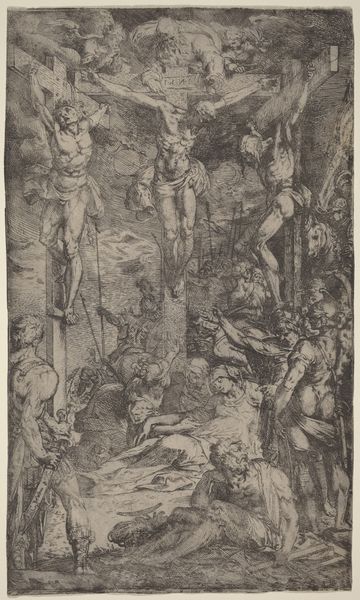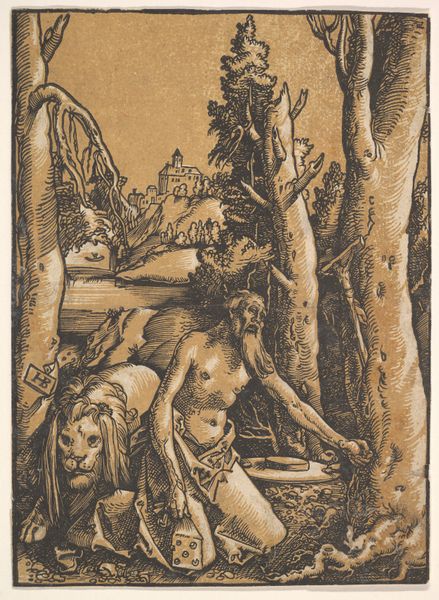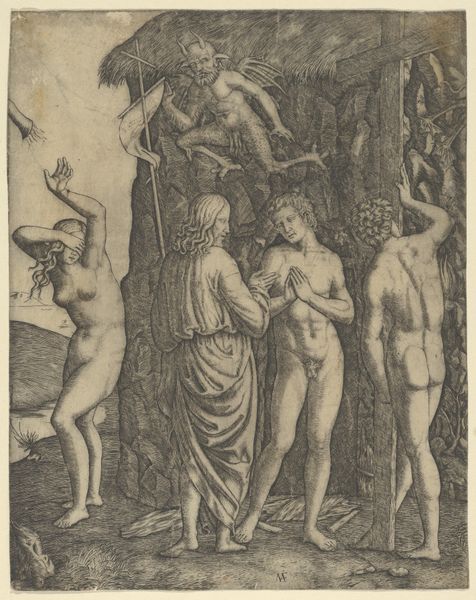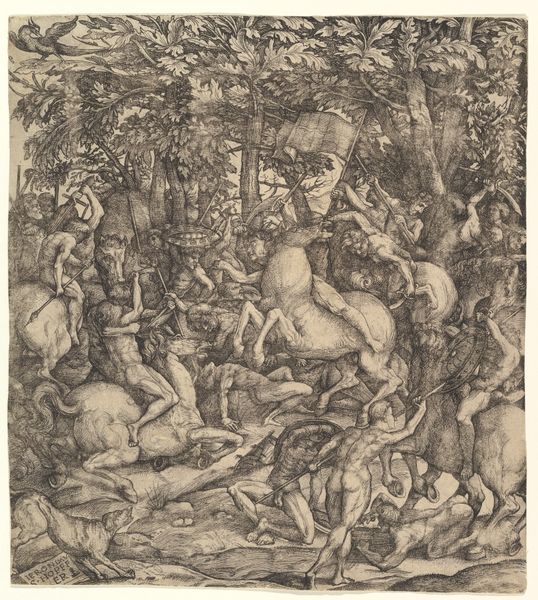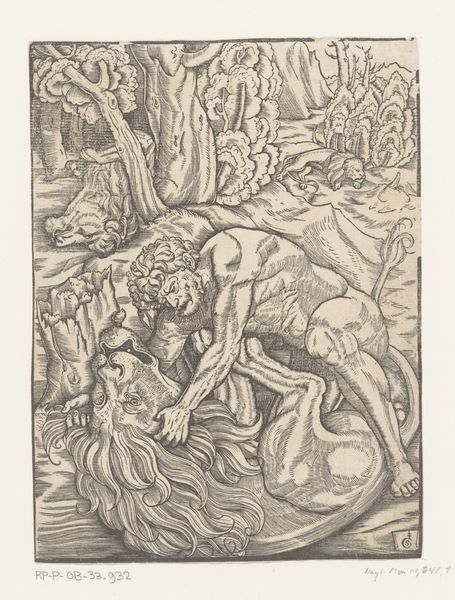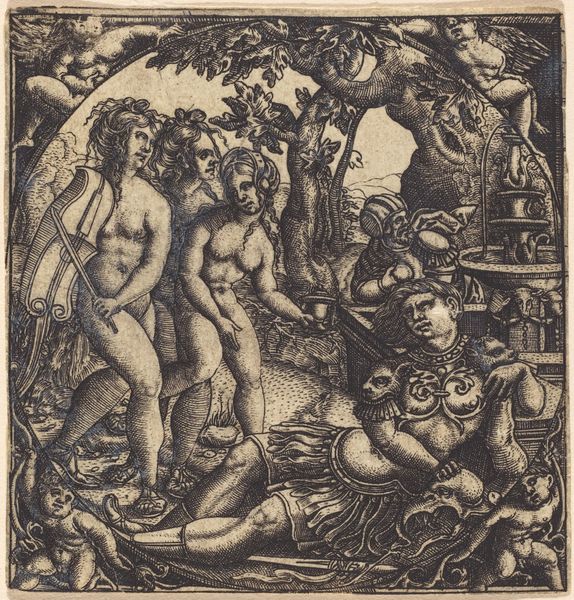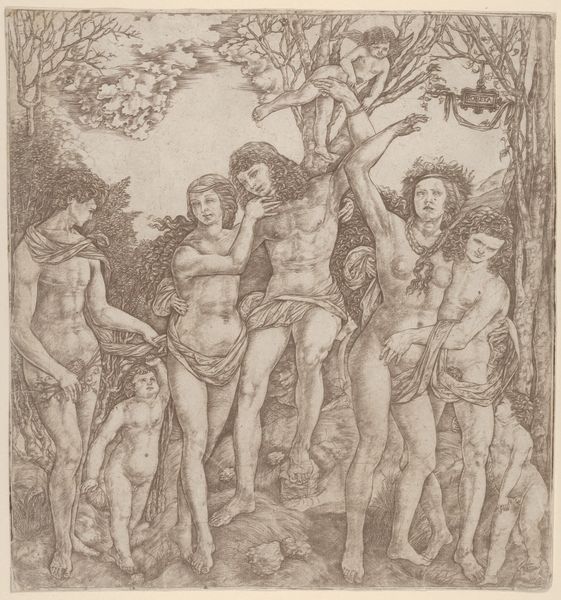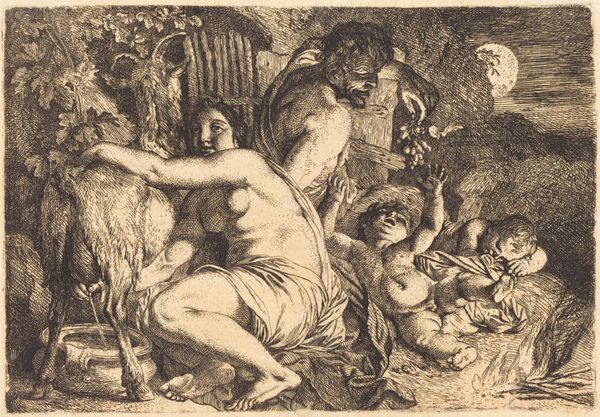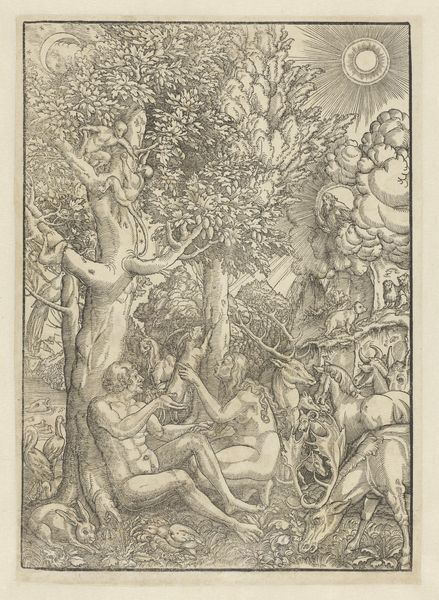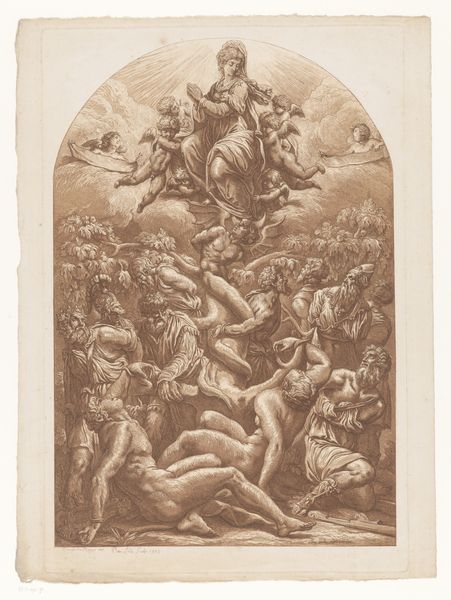
print, woodcut
#
narrative-art
# print
#
landscape
#
figuration
#
woodcut
#
history-painting
#
northern-renaissance
#
realism
Dimensions: image, sheet: 12 x 9 5/8 in. (30.48 x 24.45 cm)
Copyright: Public Domain
Curator: This woodcut, Adam and Eve, dates back to the 16th century and is attributed to Jacob Lucius der Ältere. You can find it here at the Minneapolis Institute of Art. Editor: Whoa, intense! It's got this moody, dark forest vibe happening. I can almost smell the damp earth and, yeah, something's definitely off in paradise, right? Curator: Indeed. In the context of the Northern Renaissance, this piece illustrates the biblical story of the Fall, capturing the moment of decision, loaded as it is with the weight of theological and philosophical interpretation about gender, morality, and disobedience. Editor: Disobedience… and fashion! I mean, look at them! So awkward with their fig leaves, it’s like they’re thinking, "Did we choose the right size?" It totally flips the power dynamic, making them vulnerable, not seductive, right when the serpent’s whispering sweet nothings in Eve's ear. Curator: Precisely. The very rough and contrasting lines inherent in the woodcut medium highlight not just realism, as the Renaissance often strove for, but also a certain disquiet. They expose tensions related to human form, sin, and shame. Moreover, in showing Adam complicit here, accepting the apple from Eve, questions of male authority and culpability come sharply into view. Editor: That's it. Shame! It isn’t just about some snake in the garden. There’s a deeper unease. Like, what are we even doing here? Those faces are classic “Oh crap, what have we done?" And that intense detail of the flora and fauna all around...makes you feel so small, doesn’t it? Like one bite, one bad choice and BAM…expulsion. Curator: Exactly. Consider, too, how that detailed naturalism underscores the historical dimensions of colonization and early science by constructing notions of "paradise," innocence, and subsequent exploitation. This work sits at the crossroads of theology, natural philosophy, and burgeoning colonial ambition. Editor: It's interesting, isn't it? We started off innocently, like these figures perhaps, and now we're dissecting their downfall and maybe even projecting our own worries onto their leaves and branches! But now looking again I also spot some beautiful detail, despite it all, those fine strokes indicating a kind of… tenderness. Curator: I agree completely; what a truly potent image to keep us questioning fundamental structures still shaping our contemporary reality. Editor: Yeah, that's one rebellious apple. Worth chewing on!
Comments
No comments
Be the first to comment and join the conversation on the ultimate creative platform.
